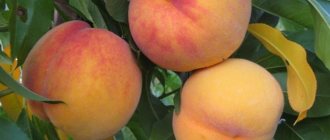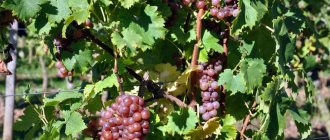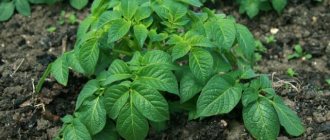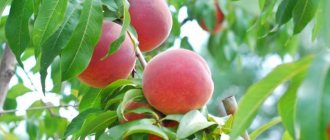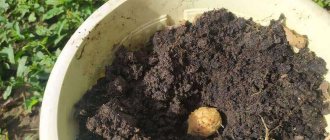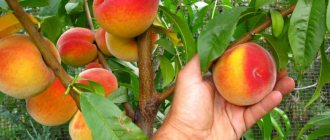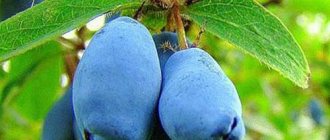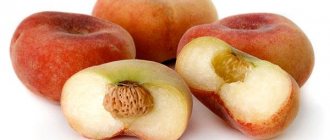History of variety selection
The Kiev Early peach variety is the result of painstaking breeding work by Soviet scientists, who were tasked with developing a new winter-hardy crop, adapted to the conditions of the Russian climate. Research on the development of the variety was carried out at the Institute of Horticulture of the UAAS under the leadership of A.P. Rodionova, I.A. Sheremeta, B.I. Shablovskaya.
The new species was obtained by crossing the varieties Grosse Mignon and Kashchenko 208 in 1939 and has since been considered the standard of frost resistance. In 1954, the Kiev Early peach was included in the State Register of Plant Varieties of Ukraine.
A derived subspecies of the Kievskiy ranniy variety, the Kievskiy late peach, is separately distinguished.
Reviews from gardeners
Early Kiev peach is loved by many gardeners, who leave positive reviews about it, noting that growing this variety is not too difficult. It tolerates winter cold very well and is considered the standard of winter hardiness. All other varieties of peaches are compared with it on this basis.
The Kyiv Early has virtually no disadvantages. Some gardeners note that, despite its resistance to leaf curl, the plant still sometimes suffers from this disease.
Description of the peach variety Kyiv early
Early Kiev peach is a medium-sized, high-yielding variety that forms a spherical compact crown of medium density. The height of the tree reaches 4 m. Young trees actively form new shoots; in adult plants, shoot formation stabilizes over time.
The leaves of the Kyiv early variety are dark green, oblong, tapered towards the end. The goblet-shaped flowers are bright pink.
Peach fruits are medium-sized - their weight varies from 80 to 100 g. The skin is thin and velvety to the touch, the flesh is juicy and tender. The description of the Kyiv Early variety emphasizes the unusually sweet taste of peaches.
The shape of the fruit is round, sometimes slightly flattened on the sides. The ventral suture is clearly defined. The color of the skin varies from pale light yellow to cream with a raspberry blush.
The stone is medium-sized, boat-shaped. It is not completely separated from the pulp.
Characteristics of the variety
Early Kiev peach is zoned for cultivation in the central zone of the Russian Federation, however, the high degree of resistance to frost allows this variety to be cultivated also in the northern regions of the country.
Drought resistance, frost resistance
The variety is considered a model of winter hardiness - it is able to safely overwinter at temperatures down to -26-27°C. Moreover, even in case of frostbite, the tree does not need to be uprooted, since it quickly recovers from the damage. As a rule, the next year the peach is ready to bear fruit.
Early Kiev peach does not tolerate drought well, which is confirmed by numerous reviews.
Does the variety need pollinators?
This species is a self-fertile variety, but it is hardly possible to obtain a bountiful harvest without pollinators. The following varieties of peaches are suitable for pollination:
- May Flower;
- Redhaven;
- Greensboro;
- Moretini's favorite;
- Velvety.
Productivity and fruiting
Peach flowering time occurs at the end of April - beginning of May. The variety blooms for 10-12 days. In mid-July the fruits begin to ripen.
Trees enter the fruiting period in the 3rd year after planting in open ground. The yield of the variety is quite high - from 30 to 45 kg of peaches are harvested from one plant with good care.
Area of application of fruits
The dense skin of the fruit ensures good transportability of the variety. Peaches can safely be transported over long distances and do not wrinkle in containers. The shelf life of fruits is on average 5-7 days.
Peaches are consumed fresh. They are also used to make jam and jam, and prepare compote. Part of the harvest is used to make candied fruits and marmalade.
Resistance to diseases and pests
Early Kiev peach is immune to most infectious diseases, but it often suffers from leaf curl. However, timely prevention of trees reduces the risk of infection to a minimum.
Among the pests dangerous to the variety, aphids and fruit moths are especially distinguished.
Advantages and disadvantages of the variety
The advantages of the variety include:
- high winter hardiness;
- ability to recover from frostbite;
- precociousness;
- high productivity;
- sweet taste of fruits;
- compactness of the crown, facilitating harvesting;
- resistance to powdery mildew and klyasterosporiosis.
The list of disadvantages of the variety is more modest:
- vulnerability to leaf curl;
- drought intolerance;
- poor separation of the stone from the pulp.
Early ripening
As a rule, early varieties are early-bearing. 2 years after planting they produce a harvest. Productivity increases with the age of trees.
Fluffy early
The fruit has a heavily pubescent skin. Plant characteristics:
- height up to 3 m;
- spreading crown;
- the bone does not separate;
- the pulp is juicy, aromatic;
- self-fertile variety.
The value of peach is its early fruit for fresh consumption.
Dagestan gold
Obtained in Dagestan as a result of open pollination. Distinctive features:
- tree size up to 3 m;
- crown spreading, round;
- fruits weigh up to 150 g;
- the taste is delicate, harmonious;
- pubescence is weak.
The value of the variety is its early fruits for universal use.
Greensboro
Bred by American breeders. Distinctive features:
- self-fertility;
- early fruiting (yields harvest 2 years after planting);
- the pulp is white, juicy;
- the taste is excellent (rating 4.6 out of 5 points);
- impossibility of transportation without loss of marketability.
Productivity in 10 years is up to 60 kg per tree.
White Swan
Obtained by Crimean breeders. Distinctive features:
- unpretentiousness;
- excellent taste;
- white skin and pulp;
- self-fertility;
- precociousness;
- yield up to 60 kg per tree.
The tree produces large fruits: up to 200 g.
Morettini's favorite
The variety is early-fertile and self-fertile. Productivity up to 50 kg per plant. The pulp has an excellent dessert taste, juicy and sweet. The value of Favorite is its resistance to fruit shedding after ripening.
Kyiv early
Industrial grade. The tree grows up to 5 m. The variety is early-bearing: the first harvest takes place after 2 years. The fruits are smooth, tasty, juicy. Weight up to 90 g. Productivity up to 60 kg of fruit from one tree.
Rules for planting peach
Early Kiev peach develops well on almost all types of soil, but at the same time it is quite sensitive to the degree of illumination and wind.
Recommended timing
Seedlings do not have the same winter hardiness as mature trees and take root better in the spring. The optimal planting time is mid-April, but preparations for planting trees begin in the fall.
Choosing a suitable location
The only limitation on soil quality when choosing a place to plant this variety is the swampiness of the soil. Groundwater must flow at a depth of at least 1.5 m.
The illumination of the area is no less important. Peach trees should not lack sun.
Important! Young seedlings need protection from strong winds.
Selection and preparation of planting material
When purchasing seedlings, you should pay attention to the presence of cracks, spots and dried areas on the trunk and shoots. In addition, healthy plants should have a well-developed root system - the minimum root length is 30 cm.
Landing algorithm
Before digging holes for planting peach trees, it is necessary to properly prepare the soil of the site. The soil is dug up, cleared of weeds and dry leaves, and then moistened abundantly.
As a fertilizer to saturate the soil, a mixture is used, which includes the following components:
- potassium chloride – 100 g;
- humus – 12-15 kg;
- superphosphate – 150-200 g;
- ash – 300-400 g.
This amount is enough to fertilize 1 m2 of land.
15-20 days after fertilizing the site, you can begin planting trees. The landing procedure is as follows:
- Planting holes are dug with parameters 40x40x40, while the top layer of soil is mixed with fertilizers, which can be peat or humus.
- The bottom of the hole is covered with drainage made of gravel or broken brick. The layer thickness should not exceed 10 cm.
- A peg with a diameter of 5 cm and a height of at least 1.5 m is driven into the middle of the hole.
- A mound of soil mixture is poured over the drainage, on which the seedling is placed. It must be carefully tied to the post.
- The roots of the plant are evenly distributed over the hill, after which they are sprinkled with earth, compacted and watered (20-30 liters of water will be enough).
- The planting procedure is completed by mulching with a mixture of peat and sawdust. The optimal layer of mulch is 5 cm.
Important! Excessive deepening of the seedling is fraught with necrosis of the trunk bark near the ground. The neck of the plant should be above the soil level.
How to successfully grow
In the overwhelming majority, almost all varieties of peaches are considered quite capricious and require painstaking care. But if we consider the Kiev variety of peach, then in this case the crop takes root in almost any soil and can easily withstand even very low temperatures.
Therefore, growing this variety will not be difficult even for a novice gardener. The main thing is to follow a few simple rules, namely:
- for planting planting material, it is better to give preference to those areas where the soil is light and well-drained;
- It is better to avoid swampy places;
- the landing area should be sunny and well protected from strong winds;
- The Kiev peach variety is an early ripening species, so try to plant it on the south side of the front garden;
- the optimal time for planting planting material is April;
- Preparing the soil for planting should be done in the fall.
Considering all these rules, you will not only easily plant a crop, but also successfully grow it if you organize proper care for it, which we will talk about below.
Preparing the landing site
We discussed the timing of planting seedlings above; it remains to find out what needs to be done to successfully plant a peach crop. So, what needs to be done before planting a peach:
- select a suitable landing zone;
- clear it of weeds and other debris;
- dig up the ground and add rotted humus, potassium fertilizer and wood ash into it.
Having completed all these manipulations, the area is left until spring. And when spring comes, at the end of March they begin to dig up the soil again, so that by April the site is completely ready for planting peach crops.
Disembarkation process
Despite the fact that the Kiev peach is an undemanding crop, further growth and formation of the tree still depends on the correct planting. Therefore, experienced gardeners recommend planting as follows:
- dig a hole and fill it with water;
- Place a layer of broken red brick at the bottom of the hole; this component will serve as drainage;
- then, a 5-meter-high rail is installed in the center of the hole;
- then, carefully place the seedling and evenly spread its root system;
- then, cover the root with soil and compact it well on top;
- and the final stage, use twine to secure the peach trunk to the rail.
When planting is completed, the peach crop should be moistened abundantly again and mulched on top with straw, dry hay or crushed pine bark. Such protection will help protect the root system from drying out.
Peach aftercare
Peach is considered a rather capricious crop, the care of which is quite painstaking, but this does not apply to the Kyiv variety. Mandatory conditions for the normal development of a tree are only regular watering and prevention against diseases.
Early Kiev peach is watered once every 7-10 days, with 20-40 liters of water used for each bush. Watering is especially important during fruit ripening.
Pruning trees is not necessary, but when the crown thickens, removing excess shoots helps provide the fruit with enough light.
The following are subject to removal:
- dried or frostbitten shoots;
- incorrectly growing, twisted branches;
- branches that shade the fruit too much.
Important! The cut areas must be treated with garden varnish to avoid fungal infections.
More details about the features of the pruning procedure are described in the video:
In northern regions with harsh winters, peach trees are prepared for wintering. Preparatory measures include the following steps:
- The tree trunk circle is watered abundantly and mulched with a mixture of humus and sawdust.
- The upper branches and trunk are covered with lime and clay as protection against pests.
- After whitewashing, the trees are covered with spruce branches.
Important! They begin to prepare the tree for wintering only when it has shed most of its leaves.
How to protect yourself from the cold
Spring frosts can also have a negative effect on this variety. If frost hits during flowering, the Kiev early peach may drop all its buds. Accordingly, in the summer, the owners of their summer cottage will not expect fruit from the tree. To prevent this from happening, gardeners traditionally advise fumigating trees with fire smoke when freezing. In this case, it will be possible to save at least some of the colors.
In order for Kiev early to survive the winter well, it must be thoroughly watered in the fall. In addition, all dry and diseased branches should be trimmed. The tree trunk circle needs to be mulched with a thick layer of sawdust. This should be done in dry weather. Otherwise, the root collar of the plant may begin to rot.
Diseases and pests, methods of control and prevention
The early Kiev peach variety is immune to most fungal diseases, but is vulnerable to leaf curl. Preventive measures include treating trees with industrially produced chemicals or homemade solutions.
The onset of the disease is indicated by coarsening of leaf blades, buds and young shoots. Subsequently, the leaves curl and turn red.
The photo below shows a Kyiv early peach affected by leaf curl.
As a preventive measure, peach is treated in the spring with Skor in a proportion of 2 ml per bucket of water. Treatment is carried out 2 times every 20 days.
If the disease has already affected the plants, they must be sprayed with a solution of Bordeaux mixture.
Harvest and storage
Early Kiev peach is an early variety: harvesting begins 2-3 years after planting in the second half of July. Due to the dense peel of peaches, the fruit can be transported. At home, this variety can be stored unwashed in a clean container, placing it in the refrigerator. The shelf life in the refrigerator is approximately one week.
You can make preserves, jams, compotes, and canned fruits from fruits, which will allow you to enjoy this product for a long time. By familiarizing yourself with the main characteristics, planting time and rules for further care of the Kiev early peach, you can get a rich harvest of tasty and healthy fruits. And knowledge about the possible appearance of pests and methods of combating them will help keep the tree healthy.


